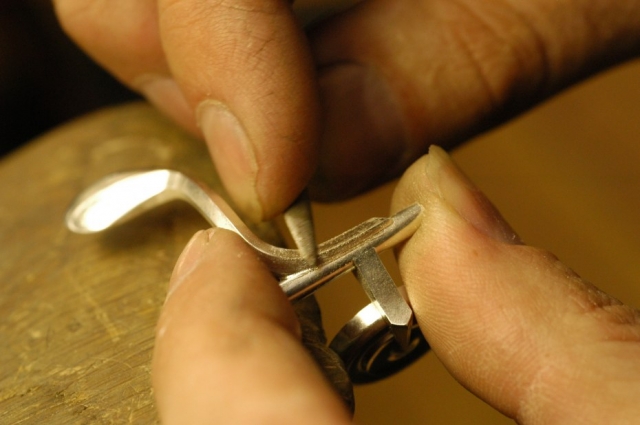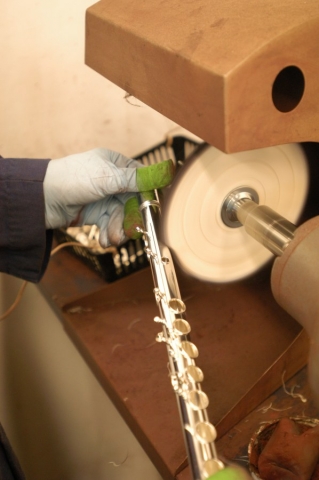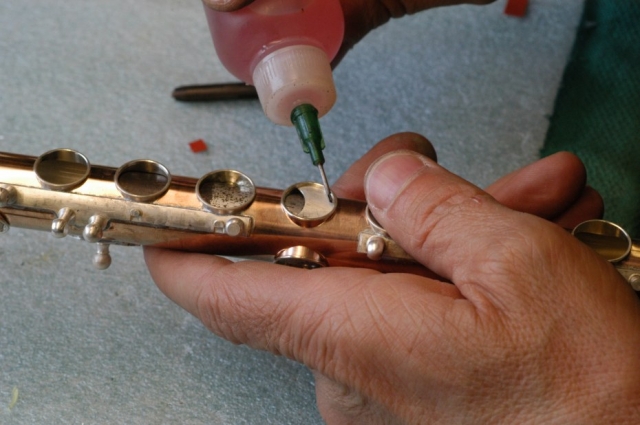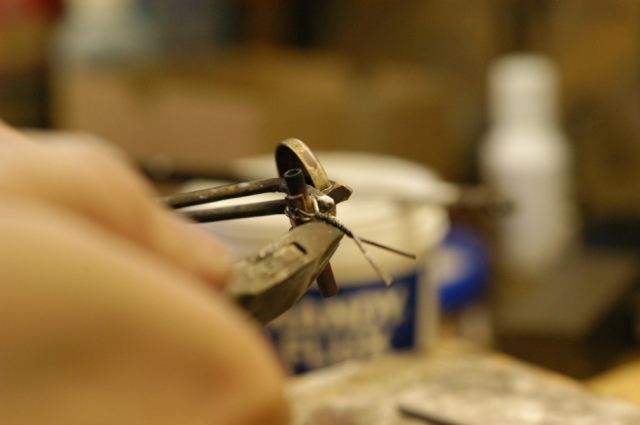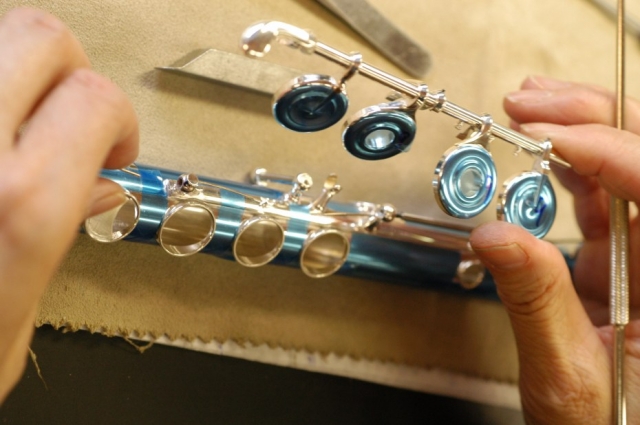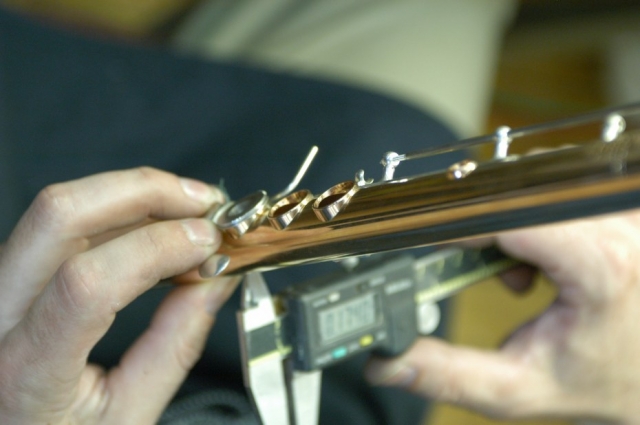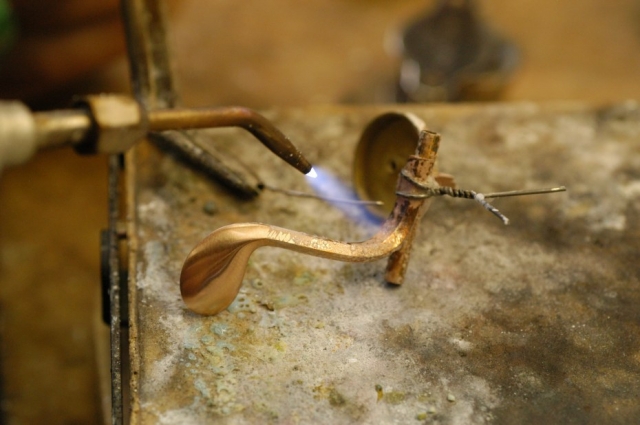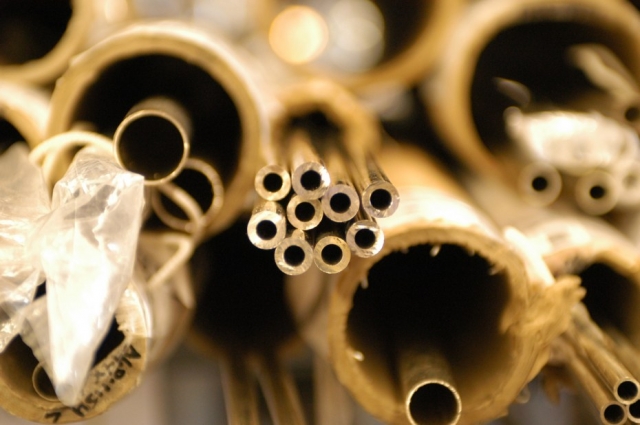Search
About us

When visiting the Powell workshop, many people are surprised for a variety of reasons: by the all-encompassing nature of making flutes or by the number of people working in our workshop. But what surprises people most is that there are not shelves and shelves of flutes. Continuing the tradition started in 1927, Powell Flutes are only made to order. It is, perhaps, one of the more beautiful aspects of our instruments. We only make instruments which have been ordered by our customers. Upon completion, each flute is shipped out to a waiting flutist.
To keep manufacturing running on time, we do keep reserves of components and materials. Our machine shop is constantly making the parts needed for our handmade flute: tone holes, key cups, arms, rings, ribs, posts, and crowns. Once an order is received we organize all the needed materials for each flute. Next the handmaking process begins.
First, the Body Department adds the tone holes to the tubing, whether they are drawn or soldered by hand. Each soldered tone hole is custom fit by hand to the body tubing. Next, ribs and posts are assembled and the fit to the body. Finally, a barrel and footjoint box is added, along with end rings. The Body Department builds the foundation on which the rest of the flute is built. Anything less than precision is unacceptable.
Once the body has passed inspection, it moves to the Stringing Department. Stringing is the term used for making the mechanism. For Custom flutes, one stringer creates the entire mechanism for each flute. Our Conservatory and Signature flutes are strung by hand in teams. Using a combination of milled, cast, and stamped pieces, the stringer constructs each key in concert with the rest of the mechanism. Each individual key is fit together with the other keys. The stringers sculpt a handmade mechanism with decades of experience. The shape and feel of each key must serve a mechanical and ergonomic purpose. The geometry must be exact. The aesthetic must be artful and beautiful.
The headjoint maker assembles the three basic pieces of every headjoint, the tube, wall, and lip plate. Each tube is drawn to a precise taper before the main pieces of the headjoint have been soldered together. Next, the maker begins the cutting process. Our wall castings are made with precise angles and dimensions built in, but the work of the headjoint cutter is essential. The headjoint cutter works with just a few simple hand tools, but gives life and character to each headjoint. The variety of styles assures that the headjoint maker must be precise with their technique and their ears. Before a headjoint is finished, it is played to inspect for tonal characteristics and to ensure each one reflects our ideals of sound.
Nearing the conclusion of its creation, the flute body and mechanism is polished before the Finishing Department pads the keys and adds adjustments. For the first time, the instrument is played as a whole and tested in several rounds of testing. The pads are adjusted to a half-thousandth of an inch, a measurement thinner than a single human hair. Each cork is sculpted by hand to fit precisely on the body. The spring tension is meticulously tempered to reflect a smooth and even feel.
Once the flute is ready to leave, it is custom fit in a French leather case and case cover, ready for a lifetime of music making.
